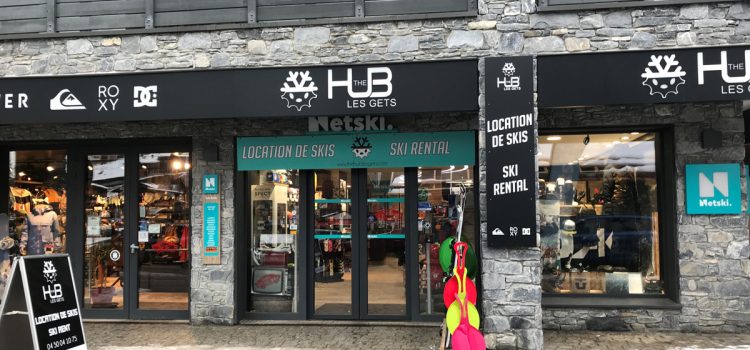Netski expert Lionel Bergoend provides some tips for getting the most out of the ski rental experience.
With the February half term holidays starting and Easter on the way it’s time to get set for skiing and with the majority of families choosing to rent equipment, Lionel Bergoend, owner of The Hub in Les Gets, provides some helpful tips to be more prepared.
Whatever the reason for hiring, it’s possible to rent ski and snowsports equipment in the best locations at the best price with the Netski ski hire network.
The ease of being able to book ski equipment hire from any device means the kit can be booked in moments and enjoyed for the whole ski trip.
Netski believes that a great ski trip starts from the ground upwards with quality, safe, well maintained, expertly fitted equipment. Netski provides expert service at hundreds of ski hire shops, ideally located in resorts across Europe. One such shop is The Hub in Les Gets, France where Lionel Bergoend heads up the team of ski technicians ready to kit out skiers with the latest ski equipment for their needs.
Lionel has helpfully provided tips on the perfect rental ski for your level.
“Help us to help you by having key information to hand. We will provide quality, well maintained equipment that is matched to your needs and sizes.”
BEFORE RENTING
What the rental expert needs to know to be able to fit your ski equipment:
- Each person’s height, weight and shoe size.
- Level of skiing and/or ski experience (EG: beginner, intermediate, expert).
- For intermediate and expert skiers – what terrain is intended to ski, such as on or off piste skiing.
Lionel explains:
“With this information the technician selects the most suitable type and length of ski, this can also take into account the present snow conditions in resort and the customer’s preferred terrain to ski during the rental period. The bindings are then set by the technician to the appropriate tension for the customer’s weight and ski experience level; so that they can safely release in the event of the force of a fall or twist.”
What to take to the ski hire shop:
- A pair of ski socks, ready to try boots on. If just hiring skis then take a ski boot along for the bindings to be set.
- Strong reusable shopping bags can be handy for carrying boots and helmets to and from the rental shop – these can also be used when shopping in resort.
Lionel’s top ski sock tip:
“Invest in good quality ski socks and only wear one pair of ski socks in ski boots.”
WHILST RENTING
Looking after your hire equipment:
- It is recommended to take a photo of each person’s equipment, in case something goes missing.
- Save the phone number of the rental shop to make contact if needed.
- Take a ski lock, to secure the equipment when stopping for drinks, lunch or après-ski.
Why hire:
- No need to pack and carry equipment.
- No airline ski carriage cost.
- Peace of mind of expert guidance and fitting.
- Confidence that the equipment is well maintained and regularly serviced.
- Reassurance that equipment can be exchanged if needed.
- As skiing skills progress equipment appropriate to present level can be hired.
- Opportunity to try different equipment types, tech and brands, which can be very informative if planning to invest in equipment.
- Chance to have the most suitable skis for present snow conditions.
- Can kit out the family without buying equipment one year only to find the children have outgrown it by the next.
- The chance to try different ski disciplines such as cross-country skiing, ski touring or telemarking.
Lionel summarised;
”Skiers can rest assured that they need look no further than Netski when getting their family set for skiing.”
The Netski benefits:
- Easy online booking.
- Conveniently located hire shops – online map shows the location.
- Convenient opening hours.
- The option to collect equipment at the end of the day, prior to the first ski day.
- Expert advice.
- Efficient service.
- Good value for money.
- Quick, no quibble exchange if not entirely happy with an item of equipment.
- Insurance cover option for peace of mind.
- Swift process for equipment return.

